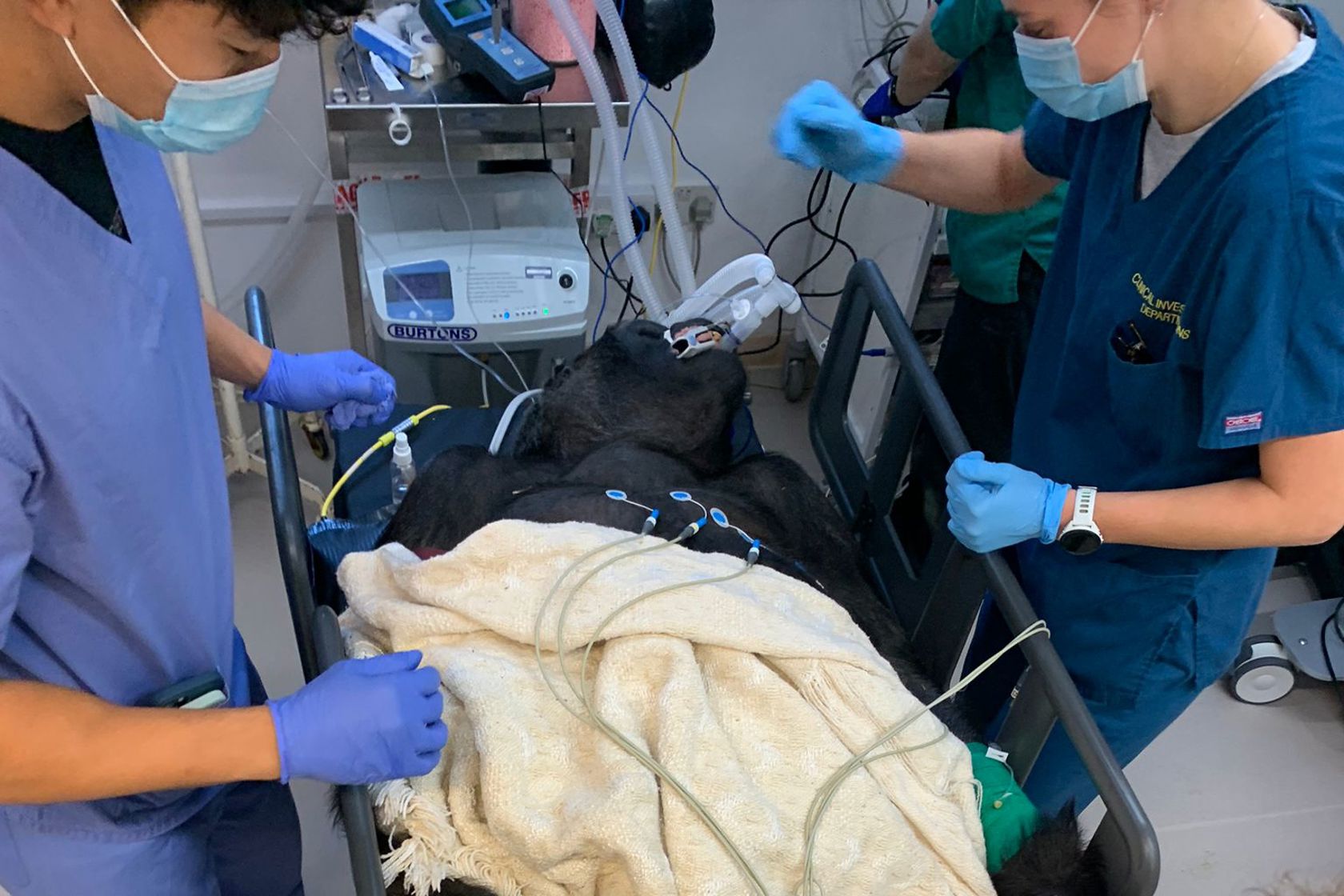Durrell Diaries: Collaborating to help care for our apes
In this edition of Durrell Diaries, Senior Veterinary Officer, Violaine Colon, describes the level of care and attention which is given to the animals at Jersey Zoo.
No day is the same for the Veterinary Department at Jersey Zoo as we look after multiple species. We sometimes start the day treating a frog that needs an antibiotic injection, then check up on a pink pigeon that is unwell before observing an orangutan that has a wound.
Recently, we had to arrange to anesthetise Kahilli, one of our female gorillas, as she had been showing signs of discomfort while eating. As she has had dental issues in the past, we decided that a full dental check was in order, which involves a general anaesthesia.
Organising a gorilla anaesthesia takes a few weeks of preparation. First, the keeper team have to increase their training with Kahilli so she will accept a voluntary injection of the anaesthetic. We also then need to organise the logistical side of it - transporting an anesthetised 107kg gorilla from the gorilla enclosure to the vet centre can be quite tricky, especially as one side of the enclosure is currently a building site!
Luckily, all went well on the day of the procedure. Kahilli cooperated with the keepers and received the full injection of the anaesthetic drugs for a reward of a spoon of honey.

Once we were confident that Kahilli was fully asleep, the whole team entered the enclosure to stabilise her before transport. A tube was placed in her throat to secure her airway, and an intravenous catheter placed on her arm for emergency access.
It took a team of eight people to transport Kahilli from the enclosure to a van, which was driven to the vet centre.

As gorillas are so closely related to humans, human doctors can help treat our apes by sharing their expertise. We are lucky to have a collaborative relationship with several consultants from the Jersey General Hospital.
Once she was in theatre, we then started to check her over.
The dentist was the first to review Kahilli. He x-rayed her skull and undertook a full examination of her teeth. No cause for concern was found and he even performed a clean for her.


Next, a team of doctors from Jersey’s Heart Team and from the Hospital’s Clinical Investigations Department assessed her heart and also gave her the all clear.

As she had had mastitis in the past, the breast consultant also gave Kahilli a check-up and again she was given the all clear.

Then, the ultrasonographer checked several of her abdominal organs and luckily again, everything was normal.

Finally, she had a full physical examination, as well as full blood tests which were all in a normal range.
In conclusion, the verdict was Kahilli is one healthy gorilla. As the oldest member of the current troop, this was very good news for the team.
Kahilli was then moved back to the gorilla enclosure into one of the off-show dens which had been filled with a nice big woodwool bed. The anaesthesia was then reversed, and she spent a couple of hours in there, waking up and recovering before being remixed with the rest of the troop. The next day Kahilli was back to her normal self, eating all her vegetables without issues.

This kind of procedure requires teamwork and full collaboration between different departments. A massive thank you once again to Gill John (Ultrasonographer), Matthew Stephenson (Breast Consultant), Alex Crowther (Breast Radiologist), Clive Dunford (Echocardiographer), Ella Brennand (Electrophysiologist), Dr Brian Wang (Cardiology Doctor) and Peter Baillon (Dentist).
This article was originally printed in the Jersey Evening Post on Friday 18 October.






